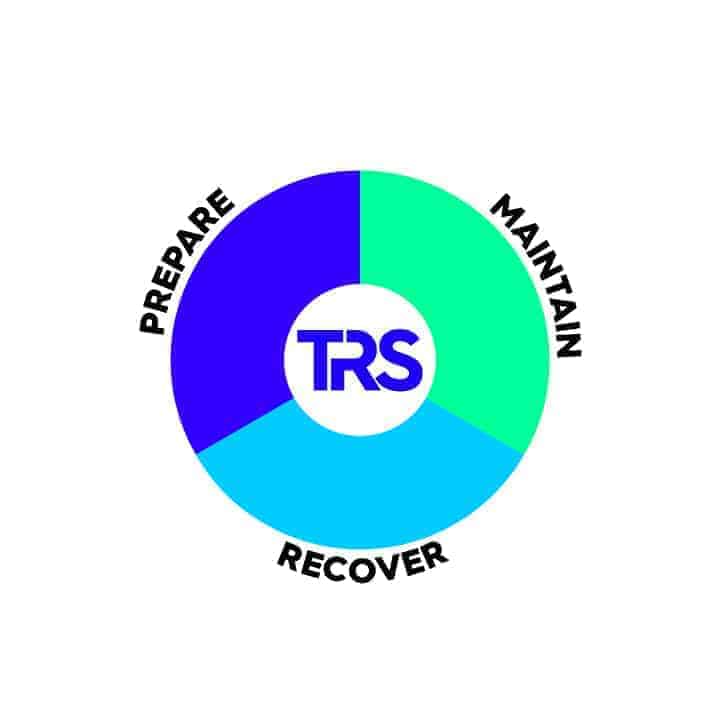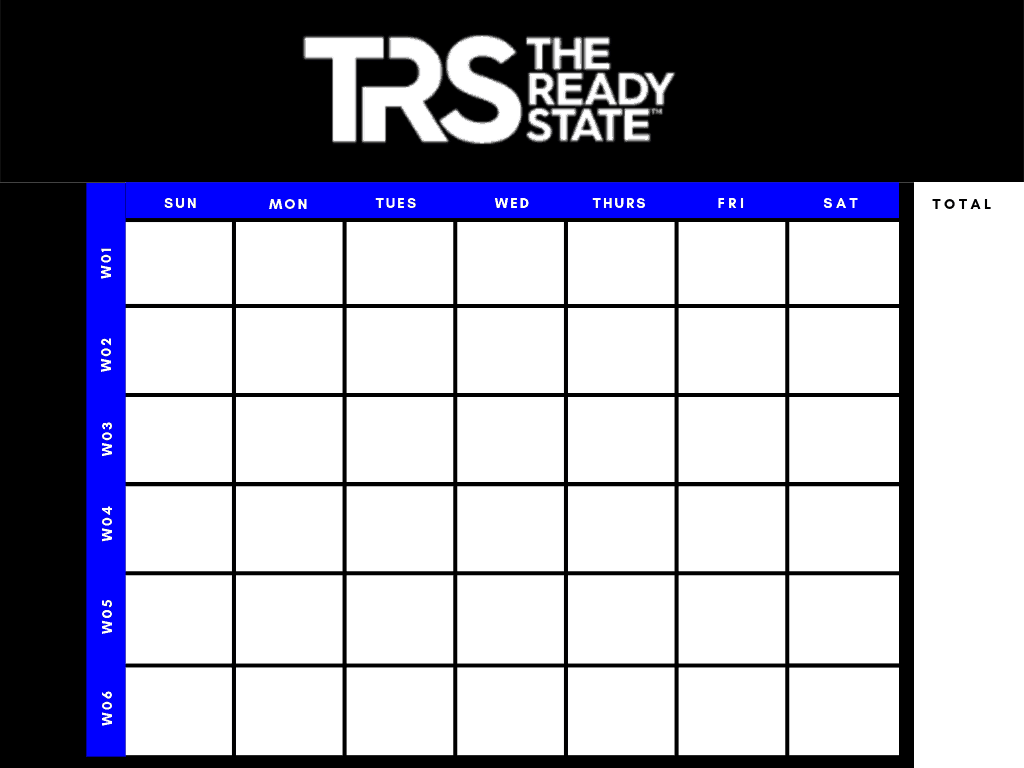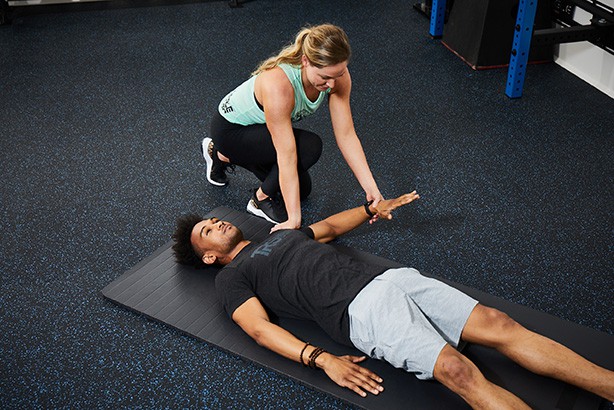How To Get READY: 3 Ways to Achieve Your Ready State
Now that we’re on the same page on what our Ready State is, it’s time to get to work.
In order to perform when you need to and live in a predominantly pain-free resting state, we need to do our homework and be open to learning…every. damn. day. We can’t just hope to magically arrive in a state of optimal health.
A common misunderstanding is that people are born happy, healthy and ready to kick ass. That is a bullshit excuse we give ourselves to get out of doing the difficult work and claiming our true human potential.
Health, happiness, and badassery is all earned. And it is redeemable no matter how far off we may feel we are right now.
Is it easy? No.
Can you take all the supplements and pills to get there? No.
Do you have to be lucky? Nope. It’s actually better if you have more reps in resilience.
Is it going to be worth it? Try it out and let me know.
Find YOUR Ready State
We are all wonderfully different and complicated beings so there is no one size fits all Ready State prescription. But, do not fret. You are in the right place. TRS is doing a darn good job of accumulating a vast library of resources to empower us to become the masters of our own body and perform basic maintenance on ourselves. To help you navigate the waters, TRS has broken down your optimal health and performance into 3 fundamental pillars:
- PREPARE
- MAINTAIN
- RECOVER

In order to be at our optimal Ready State, we need to give attention to each of these buckets of health. It is hard to be ready if we don’t prepare for what may come and recover from the good work we put in. And it is damn near impossible to perform when we need to unless we have been keeping a daily practice of maintenance and pain management.
Here is a non-exhaustive list to help you find YOUR Ready State and fill your buckets.
The Ready State Checklist
1. PREPARE
Warm-Up – Properly address your tissues and prime the movement before you ask your body to perform. As Kelly likes to say, “don’t shoot a firehose at a sponge”. The Virtual Mobility Coach has some rad Pre- and Post-Workout movement prep exercises for your training. Use it!
Hydrate – There is a lot of information out there to confuse us all on this one too. According to the latest research the 8 glasses x 8 oz rule is a bust. Hydration guru and TRS homie, Dr. Stacy Sims recommends going by bodyweight and feel. Note: It is NOT about how much or clear you pee. Check out her chat with Kelly chock-full of good hydration tidbits and individual hydration recommendations.
Eat whole foods – This one can fit in all of the buckets, but if you don’t have good foundational nutrition habits, then you’re going to be battling uphill the rest of the ride. There are a lot of fancy diets out there and inconclusive evidence a low carb diet is better than a high carb diet. From personal experience of doing ALL the diets, I’ve found that it’s best to just keep it simple to be sustainable. Eat mostly whole foods that are not processed or have ingredients you can’t pronounce.
Set an intention – What do you want out the day? Out of your workout? Intention is no longer woo-woo science. The Intention Experiment brings together some legit research and findings from some of the leading scientists around the world on how intention does profoundly affect our lives. Another fantastic example of the power of intention can be seen in the flesh at Kenny Kane’s gym in Santa Monica, CA Oak Park. Every day should not be game day. That is a quick recipe to burn yourself out. At Oak Park, they set an intention for every workout so they don’t break their athletes. It’s either a skill focus, mental toughness focus, performance focus, or recovery focus. KK’s Mastery Method is one of the most elegant and responsible training models I’ve seen to help create healthy humans.
2. MAINTAIN
Maintain your domain – Maintenance can start out as simple as making your bed every morning or cleaning your desk before you go home every day. How you do one thing is how you do everything. If you haven’t seen this commencement speech by Admiral McRaven, get ready to fall in line.
Move – Moving is a fundamental irreplaceable piece of overall health. Movement (or lack thereof) has more effect on our daily functions, cognitive ability, mood, and pain levels than most of us realize. The static convenient lifestyles of today are a page, maybe even just a paragraph, in a 1000 page book of human history. Our systems are set up to move in order to properly function. The convenience of modern living has replaced a lot of the daily movement that was automatically integrated into our daily routine just to stay alive. So we must supplement with a dedicated movement practice.
- For Beginner Movers – For those that have gotten out of the habit due to life or injury, or maybe never even have been in the habit, now is as good a time as any. Just begin where you are. Start small with just a 5-minute walk or taking the stairs instead of the escalator. Another great way to integrate movement into your daily regime is to stand while working. You can calculate how many calories you burn or your risk for a “sitting disease” on Standupkids.org.
- For Advanced Movers – For those who have already made movement a part of your lifestyle, rock on. Now, challenge yourself to try something different from your normal routine – try a different sport, move in a direction, pace or length you typically aren’t used to. Or for heaven’s sake just go play! The more movement literate you can be, the better your health story will be.
Mobilize – Yup. You know it. You are on Mr. MO-Bility’s site so you have to know the massive benefits of desensitizing your tissues after a hard day’s work. If you don’t, well you are in for a treat. Start Here.
3. RECOVER
Cool-Down – This is the time to consciously downshift your body to go from 100 miles an hour back to resting. After exercise your body temperature and heart rate are up, breathing accelerated and nervous system is firing on all cylinders. A gradual decrease in speed and effort will not only help your physiological system to downshift, but it will also help your nervous system change gears too. We’d all like to think we are highly skilled at switching tasks or even ‘multi-tasking’. Even if your name is Juliet Starrett and you can defy the laws of ‘multitasking’, being ON takes a lot of energy. Give yourself some time to cool down and ease off the pedal by walking around the block, taking a few deep breaths, or taking a moment to look up and look at the horizon.
Sleep – We all know the benefits of a good night’s sleep. Everyone has their optimal number, but if you think it is under 6 hours you are kidding yourself. You are surviving, not thriving. A great resource to learn more about the magical benefits of sleeping and the grave prognosis for the sleep-deprived is Matthew Walker, PhD book Why We Sleep.
Address Pain – Address the pain points that have consistently been bothering you before they sideline you. Look for the patterns in your movements that are sticky and use the Ready State’s Pain Pathway videos to improve how your system is moving and relating to your other systems. We typically resort to more strength or fitness exercises to address our weaknesses. When actually restoring function can open up a world of capacity we’ve just been sitting on like a big goose egg. Take the time to make sure your tissues are playing nice with everything around it so you don’t continue the dysfunction.
Contribute – Be a part of your community. If you don’t have the capacity to connect with your neighbors, family, friends, or teammates, this is a sign you may be cooked. There is a strong correlation between social interaction and health. We are pack animals and no one can get out alive all on their own. So make sure you are good to those that are good to you.
Since you are on TRS and reading an article about optimal health, it is very likely that you already have at least a couple of Ready State habits in your toolbelt. A big part of being healthy is recognizing and maintaining what we are already doing well. In an effort to constantly improve, sometimes we forget to celebrate the good things we are already doing. So before we get into improvement, take a moment to recognize what you have consistently been doing to Prepare, Recover, or Maintain your health right now. Keep that in your pocket!
Make It Simple
In order to keep our Ready State sustainable, we have to keep it simple. Start off with integrating only one new Ready State habit at a time. Break it down to the most basic act so you can’t fail – such as ‘I will drink a full glass of water every morning when I wake up’. (READ Forbes article ‘The Science Behind Adopting New Habits and Making Them Stick’ for more legit tips and tricks on how to establish new healthy habits)
One Day At A Time
The best way to get after your Ready State is one day at a time. As Kelly likes to say:
“Be consistent, before you are heroic.”
-Kelly Starrett
We all have lives that get in the way of being perfect. So don’t get bummed if you can’t check all the boxes every day. Shoot for a solid B average.

Do A Little Measuring
A good way to measure our qualitative change is to track it so we can correlate the behavior with the feeling. It is useful to apply the good ol’ “test and retest” every month to see what is helping you move the needle closer to being in your daily Ready State and what may not be serving you. “If you see no change, there is no change.” said some young guy.
I like to use a pen and paper calendar to keep myself honest. It’s an easy way to reflect back on what has been working and what maybe not so much. Here is a google sheet calendar to tweak and make it your own.

Now, we all still run the risk for bad things to happen even if you check all the boxes and do all your homework. Getting injured and knocked down is part of the game of life. To be explicitly clear, the Ready State Checklist will not prevent bad things from happening. But, practicing our Ready State habits will help us be ready when shit does hit the fan. And, maybe even more importantly, these seemingly small everyday details will help us be more resilient humans on the backend.
Sometimes feeling optimal health is hard and we don’t care about it until we don’t have it. Many of us consciously continue bad movement mechanics or bad lifestyle patterns because it makes us feel comfortable now or we may actually be scared of our own potential. We wait until it’s too late and we’re injured or sick. Let’s stop that.
Let’s stay on top of our tissues (and issues!) by creating a Ready State practice.
This is your journey…TRS is just here to make it easier to be your optimal self.


















TRS Virtual Mobility Coach
Guided mobilization videos customized for your body and lifestyle.
FREE 7-Day Trial